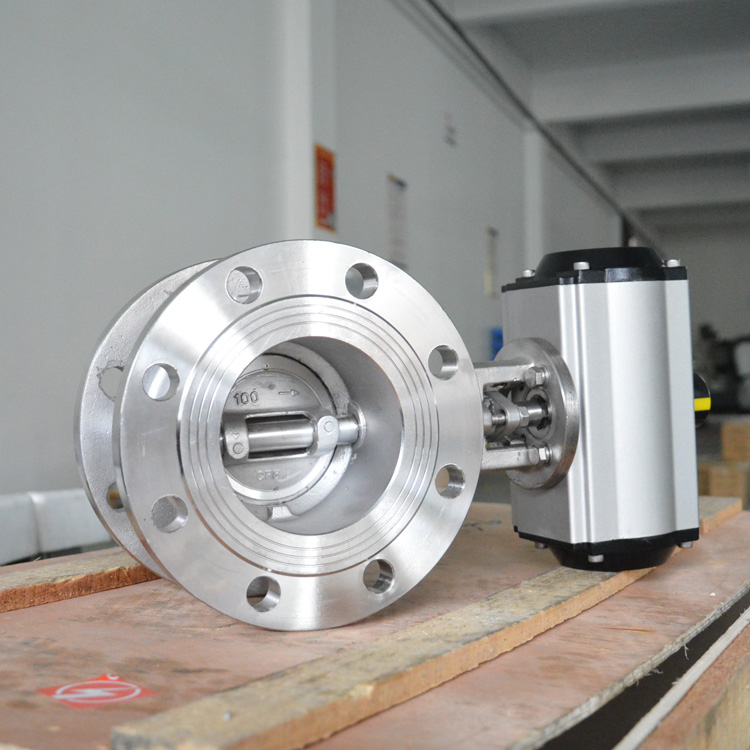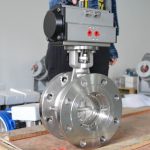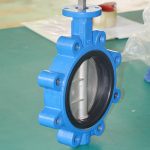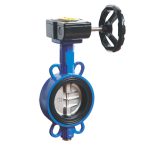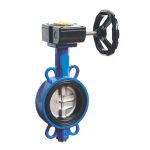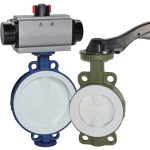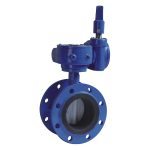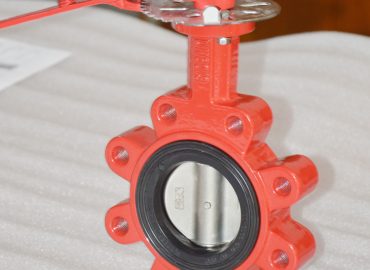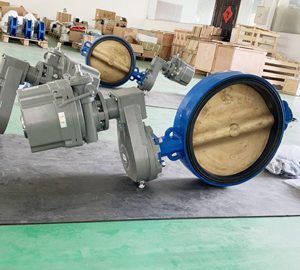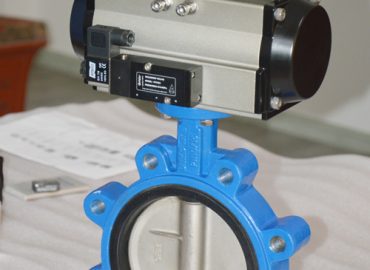The installation of gate valve and butterfly valve is a critical process that requires meticulous attention to safety measures in order to ensure the smooth operation of fluid control systems and protect the well-being of personnel involved. In this article, we will delve into the essential precautions to be taken during the installation of these valves, which can help prevent accidents, injuries, and potential damage to the equipment. By adhering to the outlined safety guidelines, you can achieve a successful valve installation while minimizing risks and creating a secure work environment for all involved parties.
Introduction
The installation of gate valve and butterfly valve demands the utmost attention to safety measures in order to guarantee not only their efficient operation but also the well-being of the personnel involved in the process. To begin with, it is crucial to select the appropriate valve type and size that matches the specific requirements of the fluid control system, taking into consideration factors such as pressure, temperature, and flow rate. Prior to installation, a thorough inspection of the valve components should be performed to identify any signs of damage or defects that may compromise its functionality. Additionally, it is essential to follow the manufacturer’s guidelines and recommendations for proper installation, ensuring that all necessary tools and equipment are readily available and in good working condition. During the installation process, workers must wear appropriate personal protective equipment (PPE) such as gloves, safety goggles, and hard hats to minimize the risk of injuries. It is also vital to ensure that the workspace is clean, well-lit, and free of potential hazards like debris or slippery surfaces. Once the valve has been installed, it is important to conduct pressure and leak tests to verify its performance and integrity. Properly securing the valve in place using suitable supports and anchoring methods can help prevent accidental dislodging or movement, which could pose a significant risk to both personnel and equipment. Lastly, regular maintenance and inspections should be carried out to identify and address any issues that may arise over time, ensuring the continued safe operation of the gate or butterfly valve within the fluid control system.
Brief overview of gate valve and butterfly valve
Gate and butterfly valves are two widely used types of valves in fluid control systems, each designed to regulate, control, or isolate the flow of various liquids and gases. Gate valves, known for their ability to provide a tight seal, operate by using a vertically sliding gate that can be raised or lowered to control the flow of fluid through the valve. They are ideal for applications requiring minimal flow restriction and a reliable shut-off mechanism. Butterfly valves, on the other hand, consist of a circular disc mounted on a rotating shaft which, when turned, either allows or restricts fluid flow. These valves are known for their compact design, quick operation, and suitability for various applications, including those involving high-pressure and temperature conditions. Both gate and butterfly valves serve specific purposes within different industries and fluid systems, offering distinct advantages in terms of performance, cost, and maintenance requirements.

Importance of safety measures during installation
The importance of adhering to safety measures during the installation of gate and wafer butterfly valve cannot be overstated, as it ensures not only the proper functioning of the valves but also the protection of personnel and equipment involved in the process. Strict adherence to safety guidelines minimizes the risk of accidents, injuries, and damage to the valve components, ultimately leading to a successful installation with optimal performance. By following the manufacturer’s recommendations, using appropriate personal protective equipment, and maintaining a clean, hazard-free work environment, installers can create a safe atmosphere that fosters efficiency and precision. Moreover, regular maintenance and inspections further reinforce the safety and reliability of the valves, contributing to the overall longevity and effectiveness of the fluid control system. In essence, prioritizing safety measures during valve installation is critical for ensuring smooth operations, safeguarding personnel, and preserving the integrity of the equipment.
Purpose
The purpose of this blog post is to provide valuable insights and guidance on the essential safety measures that must be taken when installing gate valve and butterfly valve in fluid control systems. By highlighting the importance of adhering to safety guidelines, selecting the appropriate valve type, and following proper installation procedures, this post aims to empower readers with the knowledge necessary to ensure a secure and successful valve installation. Furthermore, it seeks to emphasize the significance of maintaining a safe work environment, using personal protective equipment, and conducting regular maintenance checks to guarantee the long-term reliability and efficiency of these valves. Ultimately, this blog post serves as a comprehensive resource for professionals and enthusiasts alike, offering expert advice and best practices for the safe and effective installation of gate and butterfly valves in various applications and industries.
Pre-installation Preparation
Pre-installation preparation is a critical aspect of installing gate valve and butterfly valve, as it lays the foundation for a safe and successful installation process. To begin with, it is essential to carefully review the manufacturer’s guidelines and recommendations, as well as any relevant industry standards and regulations, to ensure that the chosen valve type, size, and materials are suitable for the specific application and operating conditions, such as pressure, temperature, and flow rate requirements. Once the appropriate valve has been selected, a thorough inspection of all components should be conducted to identify any signs of damage, defects, or wear that may compromise the valve’s performance or safety. This includes checking the sealing surfaces, gaskets, and fasteners for integrity and compatibility with the system.
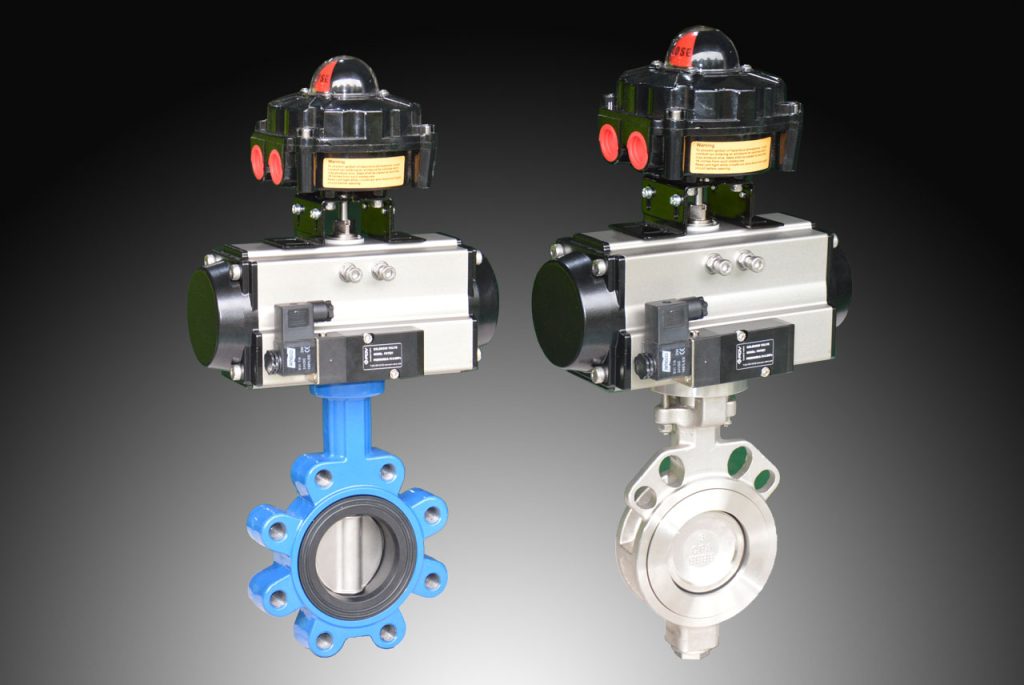
Furthermore, it is crucial to gather all necessary tools, equipment, and personal protective gear required for the installation, making sure that they are in good working condition and readily accessible. This may include items such as wrenches, pipe thread sealant, safety goggles, gloves, and hard hats. Preparing the workspace is another vital step in the pre-installation process, which involves ensuring that the area is clean, well-lit, free of debris, and provides sufficient space for maneuvering and handling the valve components. This helps minimize the risk of accidents, injuries, or damage to the equipment during installation.
Lastly, it is beneficial to create a detailed installation plan that outlines the step-by-step procedures, safety precautions, and personnel responsibilities, promoting a clear understanding among the team members and fostering a smooth, efficient workflow. By dedicating time and effort to pre-installation preparation, installers can set the stage for a secure, effective, and seamless valve installation experience that results in optimal performance and long-lasting reliability within the fluid control system.
Proper selection of valve type and size
The proper selection of valve type and size is a crucial aspect of any fluid control system, as it directly impacts the efficiency, safety, and overall performance of the system. Choosing the right valve involves considering various factors such as the nature of the fluid being handled, operating pressure and temperature conditions, flow rate requirements, and the specific function the valve is intended to serve, be it regulation, isolation, or flow control. Gate valves are typically chosen for their ability to provide minimal flow restriction and a tight seal, while butterfly valves offer a compact design and quick operation, making them suitable for a wide range of applications. By thoroughly evaluating the system requirements and consulting manufacturer guidelines, one can select the most appropriate valve type and size that ensures optimal system performance, reduces the risk of malfunctions or damage, and ultimately contributes to the longevity and reliability of the fluid control system.
Ensuring compatibility with the piping system
Ensuring compatibility between the chosen valve and the existing piping system is a fundamental aspect of a successful installation, as it plays a pivotal role in maintaining the efficiency, safety, and performance of the fluid control system. Compatibility considerations include not only the valve type and size but also the materials, connection types, and pressure ratings of both the valve and the piping system. It is vital to verify that the valve material is resistant to the specific fluid being used, as well as compatible with the temperature and pressure conditions within the system. Additionally, the valve’s connection type, such as flanged, threaded, or wafer-style, must correspond to the pipe connections to ensure a secure and leak-free fit. Lastly, the pressure rating of the valve should be equal to or greater than the maximum operating pressure of the piping system to prevent potential failures or damage. By taking the time to carefully evaluate and confirm the compatibility between the valve and the piping system, installers can help guarantee a seamless integration, optimal system performance, and long-term reliability.

Gathering necessary tools and equipment
Gathering the necessary tools and equipment before commencing the installation process is an essential step in ensuring a safe, efficient, and successful valve installation. Having the right tools on hand not only streamlines the workflow but also minimizes the risk of accidents, injuries, or damage to the valve components. It is crucial to consult the manufacturer’s guidelines to determine the specific tools required for the installation, which may include wrenches, pipe cutters, thread sealants, gaskets, and lubricants, among others. In addition to these tools, it is equally important to have personal protective equipment (PPE) readily available, such as safety goggles, gloves, hard hats, and ear protection, to safeguard personnel from potential hazards during the installation process. By thoroughly preparing and organizing the necessary tools and equipment in advance, installers can create an environment that fosters precision, safety, and efficiency, ultimately contributing to a successful valve installation and long-lasting performance within the fluid control system.
Checking for any existing hazards in the installation area
Before commencing the installation process, it is vital to conduct a thorough inspection of the installation area for any existing hazards that could potentially compromise the safety of personnel or the integrity of the valve components. This entails examining the workspace for any debris, obstacles, or slippery surfaces that may cause accidents or impede movement during the installation. Additionally, it is crucial to ensure that the area is well-lit and properly ventilated, providing a comfortable and safe environment for the installers. Identifying and addressing any electrical or mechanical hazards, such as exposed wiring or malfunctioning equipment, is also an essential aspect of maintaining a secure workspace. Furthermore, it is important to verify that the existing piping system has been adequately isolated, depressurized, and drained before initiating the installation, eliminating the risk of fluid release or pressure-related incidents. By diligently checking for and mitigating any existing hazards in the installation area, installers can create a safe and conducive environment for a smooth, efficient, and successful valve installation.
Personal Protective Equipment (PPE)
Personal Protective Equipment (PPE) plays a crucial role in ensuring the safety and well-being of personnel engaged in various tasks, such as valve installation, maintenance, and operation. PPE is specifically designed to minimize exposure to potential hazards and protect individuals from injuries or harm that could result from contact with harmful substances, mechanical impacts, extreme temperatures, and other dangerous conditions. It is essential for installers to be well-equipped with the appropriate PPE, which may include safety goggles or face shields for protecting the eyes from flying debris, dust, or chemical splashes; gloves made of suitable materials to guard against cuts, abrasions, or burns; hard hats to shield the head from falling objects or accidental impacts; ear protection devices, such as earplugs or earmuffs, to mitigate noise-induced hearing loss; and safety footwear that offers slip resistance, puncture protection, and support for the feet.
In addition to selecting the correct PPE, it is vital to ensure that these protective items are well-maintained, properly fitted, and worn consistently during the installation process. This includes regularly inspecting PPE for signs of wear or damage and promptly replacing any compromised equipment. Furthermore, personnel should be adequately trained on the proper use, care, and storage of their PPE to maximize its effectiveness and longevity. By prioritizing the consistent use and maintenance of Personal Protective Equipment, installers can significantly reduce the risk of accidents or injuries, fostering a safe and secure working environment that promotes efficiency, precision, and overall success in valve installation projects.
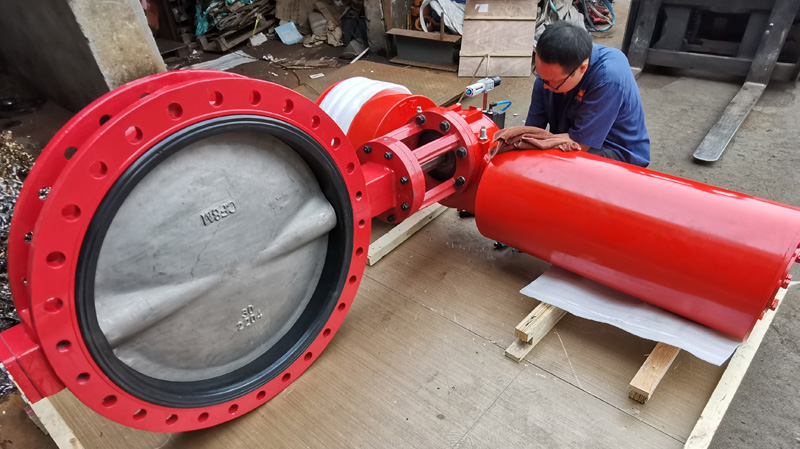
Importance of wearing appropriate PPE
The importance of wearing appropriate Personal Protective Equipment (PPE) cannot be overstated, as it serves as a vital safeguard for individuals engaged in tasks that may present potential hazards or risks. PPE is specifically designed to minimize exposure to various dangers, such as harmful substances, mechanical impacts, extreme temperatures, and noise, thereby significantly reducing the likelihood of injuries, accidents, or long-term health issues. Utilizing suitable PPE not only protects personnel but also promotes a culture of safety and responsibility within the workplace, leading to improved efficiency and productivity. It is crucial for employers to provide adequate training on the proper use, care, and maintenance of PPE, ensuring that personnel are well-informed and equipped to handle their tasks safely. In essence, the consistent use of appropriate PPE is a fundamental aspect of maintaining a secure working environment, ultimately contributing to the well-being and success of both individuals and organizations.
List of recommended PPE (e.g., safety goggles, gloves, hard hats, etc.)
A comprehensive list of recommended Personal Protective Equipment (PPE) is essential for ensuring the safety and well-being of individuals working in various industries, as it helps to mitigate potential hazards and risks associated with specific tasks. This list may include safety goggles or face shields, which provide eye protection against flying debris, dust, or chemical splashes; gloves made from appropriate materials to prevent cuts, abrasions, burns, or exposure to harmful substances; hard hats designed to shield the head from falling objects or accidental impacts; ear protection devices, such as earplugs or earmuffs, to reduce the risk of noise-induced hearing loss; safety footwear offering slip resistance, puncture protection, and support for the feet; and high-visibility clothing to enhance worker visibility in low-light conditions or busy environments. Depending on the nature of the work, additional PPE, like respiratory protection or specialized suits, might be necessary to ensure adequate protection against specific hazards. By adhering to a comprehensive list of recommended PPE, employers can create a safer workplace that minimizes injuries, accidents, and long-term health issues, ultimately fostering a culture of safety, responsibility, and success within their organization.
Handling and Lifting Techniques
Proper handling and lifting techniques are essential for maintaining a safe and efficient work environment, as they help prevent injuries, accidents, and damage to equipment or materials. Implementing correct practices begins with understanding the weight and dimensions of the object being lifted, as well as assessing any potential hazards associated with the task. Prior to lifting, it is crucial to establish a stable base by positioning the feet shoulder-width apart and bending the knees to lower the body. This stance allows for even distribution of the load and reduces strain on the back. When gripping the object, it is important to engage the entire hand and ensure a firm hold to prevent slipping or loss of control.
During the lifting process, workers should maintain a straight back and use their legs to power the lift, keeping the object close to their body to minimize stress on the spine and muscles. Avoiding twisting or sudden movements while lifting is essential for reducing the risk of injury. In instances where an object may be too heavy or unwieldy for one person to manage safely, it is vital to enlist the assistance of a colleague or utilize mechanical aids, such as dollies or hoists, to facilitate the lift.
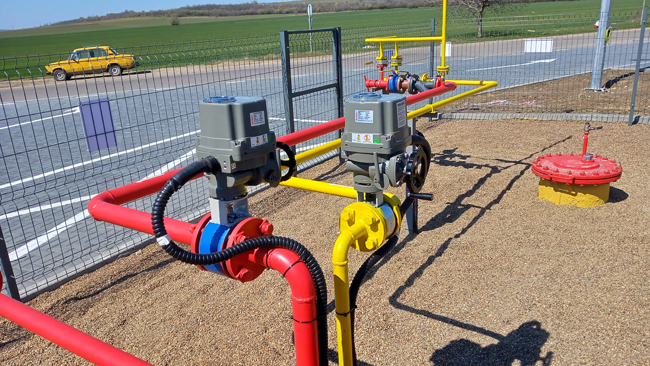
Furthermore, proper communication and coordination among team members are crucial when lifting heavy objects together. It is also important to consider the path of movement, ensuring that it is clear of obstacles and hazards, which can cause trips or falls. By consistently implementing proper handling and lifting techniques, workers can significantly reduce the risk of injury, improve efficiency, and protect valuable assets within their work environment.
Safe handling and lifting of heavy valves
Safe handling and lifting of heavy valves is crucial for ensuring the well-being of personnel and maintaining the integrity of the equipment during installation or maintenance processes. Prior to lifting, it is essential to assess the weight and dimensions of the valve, as well as any potential hazards associated with the task. In instances where the valve is too heavy or cumbersome for manual handling, utilizing mechanical aids such as hoists, cranes, or forklifts can greatly reduce the risk of injury and facilitate a more efficient process. When manually lifting valves, workers should employ proper techniques, such as establishing a stable base, keeping a straight back, using leg strength to power the lift, and maintaining a firm grip on the valve while keeping it close to the body. Clear communication and coordination among team members are also vital when handling heavy valves together. Additionally, it is important to ensure that the path of movement is free of obstacles and hazards to prevent accidents. By adhering to safe handling and lifting practices for heavy valves, installers can minimize the risk of injuries, accidents, and damage to the equipment, ultimately contributing to a successful and efficient valve installation or maintenance process.
Use of mechanical aids (e.g., hoists, lifts, etc.)
The use of mechanical aids, such as hoists, lifts, and other lifting devices, plays a significant role in enhancing safety and efficiency within various work environments, particularly when handling heavy or cumbersome objects. These aids not only reduce the physical strain on workers but also minimize the risk of injuries resulting from improper lifting techniques or overexertion. By employing mechanical aids, personnel can more effectively manage tasks that may be beyond their physical capabilities, ensuring that equipment and materials are handled with precision and care. Additionally, using these aids can lead to increased productivity, as they enable workers to perform tasks more quickly and with less fatigue. It is essential for workers to receive proper training on the operation and maintenance of mechanical aids, as well as adhere to safety guidelines and protocols while utilizing them. In essence, the use of mechanical aids in handling and lifting processes greatly contributes to a safer, more efficient, and productive work environment, ultimately fostering a culture of responsibility and success within an organization.
Proper body mechanics to prevent injuries
Employing proper body mechanics is essential for preventing injuries and maintaining overall health and well-being, particularly when engaging in tasks that involve lifting or handling heavy objects. These techniques help to minimize the strain on muscles, joints, and the spine, reducing the risk of musculoskeletal disorders and other work-related injuries. Key principles of proper body mechanics include establishing a stable base by positioning the feet shoulder-width apart, bending the knees to lower the body, and keeping a straight back while lifting an object. This stance allows for even distribution of the load, minimizing stress on the back and promoting better balance. When lifting, it is important to use leg strength to power the movement, rather than relying on the back muscles, and to keep the object close to the body to reduce strain. Avoiding sudden or twisting movements while lifting or carrying objects can further prevent injuries. Additionally, frequent breaks and stretching exercises can help alleviate muscle fatigue and maintain flexibility. By consistently practicing proper body mechanics, workers can significantly reduce their risk of injury, improve efficiency, and promote a healthier, safer work environment.
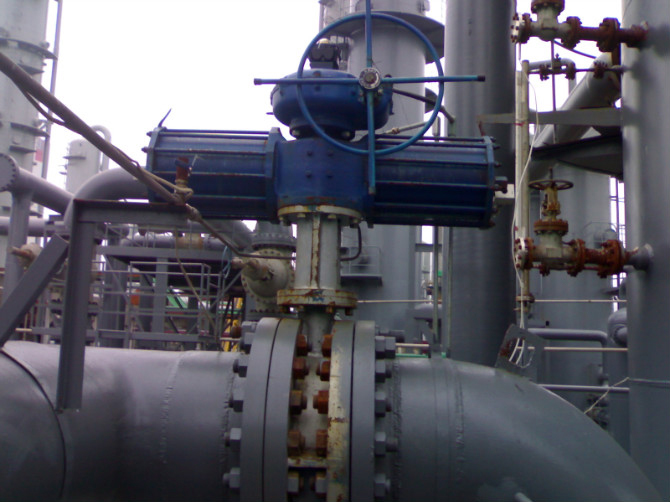
Installation Guidelines
Adhering to comprehensive installation guidelines is essential for ensuring the safe and efficient implementation of equipment, machinery, or systems within various industries. These guidelines serve as a roadmap for workers, outlining the necessary steps, procedures, and safety precautions that must be followed to achieve a successful installation process. Prior to initiating any installation, it is crucial to thoroughly review and understand the manufacturer’s instructions, as well as any applicable industry standards or regulations, to ensure compliance and proper functioning of the equipment.
Preparation is a key element of installation guidelines, encompassing tasks such as gathering the required tools and materials, verifying the compatibility of all components, and assessing potential hazards or obstacles within the installation site. Proper training and competence in handling the equipment are vital, as well as adherence to Personal Protective Equipment (PPE) requirements to minimize the risk of injury during the installation process.Effective communication and coordination among team members contribute significantly to a smooth and efficient installation process. This includes assigning specific roles and responsibilities, discussing potential challenges, and establishing a clear plan of action. During the installation itself, workers should employ proper handling and lifting techniques, as well as utilize mechanical aids when necessary, to prevent injuries and damage to the equipment.
Upon completion of the installation, thorough inspection and testing of the equipment are essential to ensure proper functioning and adherence to safety standards. This may include checking for leaks, verifying electrical connections, and confirming the correct operation of all components. Any issues detected should be promptly addressed and resolved before the equipment is put into service.By consistently following installation guidelines, workers can promote a safe and efficient work environment, reduce the likelihood of accidents or malfunctions, and ultimately contribute to the success and productivity of their organization.
Following manufacturer’s instructions
Following the manufacturer’s instructions is of paramount importance when handling, installing, or maintaining equipment and machinery. These guidelines provide detailed information on proper usage, assembly, and safety precautions, ensuring that the equipment functions efficiently and safely throughout its lifespan. Adhering to the manufacturer’s instructions not only minimizes the risk of accidents and injuries but also helps to maintain the equipment’s warranty and prevent any potential damage or malfunctions. Additionally, compliance with these guidelines promotes a better understanding of the equipment’s capabilities and limitations, allowing workers to optimize its performance while adhering to industry standards and regulations. In essence, following the manufacturer’s instructions is a crucial aspect of fostering a safe and efficient work environment, ultimately contributing to the success and productivity of an organization.
Ensuring proper alignment and orientation of the valve
Ensuring proper alignment and orientation of a valve during installation or maintenance is crucial for its optimal functioning and overall system performance. Correct alignment and orientation not only facilitate smooth flow control but also prevent issues such as leaks, pressure drops, or premature wear and tear of the valve components. To achieve this, it is essential to carefully follow the manufacturer’s guidelines and adhere to any industry-specific standards or regulations governing valve installation. Proper alignment typically involves verifying that the valve’s inlet and outlet connections are accurately positioned in relation to the piping system, while correct orientation may require positioning the valve actuator or stem in a specific manner to allow for easy access and operation. In some cases, the use of specialized tools or equipment, such as laser alignment devices, may be necessary to ensure precise alignment. By consistently prioritizing proper alignment and orientation of valves, installers can help to extend the equipment’s lifespan, enhance system efficiency, and reduce the likelihood of operational issues or costly downtime.

Correctly tightening all bolts and fasteners
Correctly tightening all bolts and fasteners is an essential aspect of equipment installation and maintenance, as it ensures the stability, safety, and reliability of the overall system. Properly tightened bolts and fasteners help to maintain the integrity of connections, prevent leaks or malfunctions, and reduce the risk of premature wear and tear on components. To achieve this, it is crucial to follow the manufacturer’s specifications regarding torque values and tightening sequences, as well as utilize appropriate tools, such as torque wrenches, to guarantee accuracy and consistency. In some cases, applying a specific pattern or sequence when tightening fasteners may be necessary to distribute the load evenly and avoid undue stress on individual components. Moreover, regular inspection and maintenance of bolts and fasteners should be conducted to identify and address any potential loosening or corrosion over time. By taking the time to correctly tighten all bolts and fasteners during installation and maintenance processes, workers can contribute to the overall safety, efficiency, and longevity of the equipment and systems they manage.
Double-checking connections for leaks
Double-checking connections for leaks is a critical step in the installation, maintenance, and operation of equipment and systems, as it helps ensure their safety, efficiency, and reliability. Undetected leaks can lead to various issues, such as loss of pressure, reduced performance, wasted resources, and even potential hazards, depending on the nature of the substances involved. To effectively identify and address any leaks, it is essential to carefully inspect all connections, joints, and seals after installation or maintenance procedures. Various methods can be employed for leak detection, including visual inspection, pressure testing, or the use of specialized equipment and sensors. In the event that a leak is discovered, prompt action should be taken to rectify the issue, which may involve re-tightening connections, replacing seals or gaskets, or repairing damaged components. By consistently double-checking connections for leaks, workers can help to maintain the optimal performance and safety of the equipment and systems they manage, ultimately contributing to the success and sustainability of their organization.
Electrical and Control System Safety
Electrical and control system safety is of utmost importance in various industries, as it plays a critical role in ensuring the safe operation of equipment and machinery, protecting the workforce, and maintaining overall system reliability. Adhering to stringent safety standards, regulations, and best practices is essential for mitigating the risks associated with electrical and control systems, including electrical shocks, fires, equipment malfunctions, and other hazards.
One of the key aspects of electrical and control system safety is the proper design and installation of components, such as wiring, circuit breakers, grounding connections, and control panels. This entails following the manufacturer’s guidelines, as well as adhering to relevant industry standards and codes, like the National Electrical Code (NEC) or the International Electrotechnical Commission (IEC) standards. Ensuring that all electrical components are correctly rated for their intended application, and that they are installed by qualified personnel, helps to minimize the risk of accidents and ensure the reliable operation of the system.Regular inspection and maintenance of electrical and control systems are also crucial for maintaining their safety and performance. This includes checking for signs of wear, corrosion, or damage in wiring and connections, verifying the proper functioning of protective devices like circuit breakers or fuses, and calibrating control system components to ensure accurate operation. Any identified issues should be promptly addressed to prevent potential hazards or system failures.
Another important aspect of electrical and control system safety is the implementation of appropriate safety procedures and training for personnel who interact with these systems. This may involve educating workers on the risks associated with electrical hazards, providing guidance on the use of personal protective equipment (PPE), and establishing protocols for lockout/tagout procedures to prevent accidental energization of equipment during maintenance or repair activities.Lastly, effective communication and signage play a vital role in promoting electrical and control system safety. Clearly marked labels and warning signs can help to inform workers of potential hazards and guide them in following the appropriate safety precautions.By prioritizing electrical and control system safety, organizations can create a safer work environment, reduce the risk of accidents and injuries, protect valuable equipment and assets, and ensure the efficient operation of their systems.
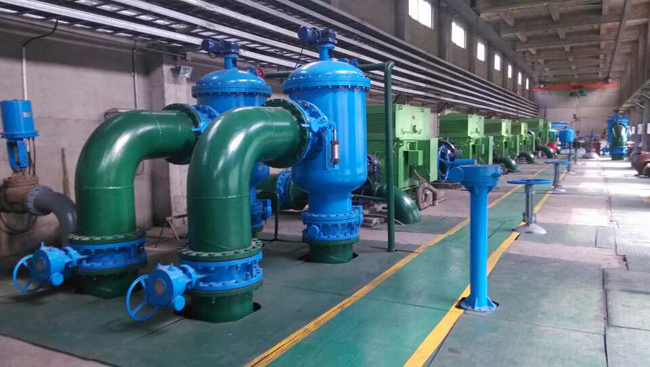
Ensuring proper grounding and bonding
Ensuring proper grounding and bonding is a critical aspect of electrical safety and system performance, as it helps to protect personnel, equipment, and facilities from potential hazards associated with electrical faults or surges. Grounding provides a safe path for fault currents to flow, minimizing the risk of electrical shock, while bonding ensures the electrical continuity between different conductive components, aiding in the dissipation of static charges and reducing the likelihood of voltage differences that can lead to arcing or sparking. To achieve proper grounding and bonding, it is essential to carefully follow the manufacturer’s guidelines, as well as adhere to relevant industry standards and codes, such as the National Electrical Code (NEC) or the International Electrotechnical Commission (IEC) standards. This may involve selecting appropriate grounding conductors, correctly sizing and installing grounding electrodes, and ensuring that all metallic components are adequately bonded. Regular inspection and maintenance of grounding and bonding connections should also be conducted to verify their integrity and effectiveness over time. By prioritizing proper grounding and bonding, organizations can enhance the safety and reliability of their electrical systems, ultimately contributing to a safer and more efficient work environment.
Using lockout/tagout procedures when working on electrical components
Using lockout/tagout procedures when working on electrical components is a vital safety practice that helps protect workers from the hazards associated with energized equipment and machinery. These procedures involve the systematic isolation and de-energization of electrical circuits, as well as the application of physical locks and warning tags to prevent accidental re-energization during maintenance, repair, or inspection activities. By following proper lockout/tagout protocols, workers can significantly reduce the risk of electrical shock, arc flash incidents, or other injuries that may result from unexpected equipment startup or release of stored energy. To ensure the effectiveness of lockout/tagout procedures, it is essential for organizations to develop and implement comprehensive safety programs that include clear guidelines, worker training, and regular audits. This may involve identifying all potential energy sources, establishing specific steps for isolating and verifying the absence of energy, and providing workers with appropriate tools and equipment for the safe execution of lockout/tagout tasks. By prioritizing the use of lockout/tagout procedures when working on electrical components, organizations can create a safer work environment, minimize the risk of accidents, and promote a culture of electrical safety awareness.
Verifying correct wiring connections and control settings
Verifying correct wiring connections and control settings is a crucial step in the installation, maintenance, and operation of electrical and control systems, as it ensures their safe and efficient functioning. Proper wiring connections and control settings help to avoid issues such as short circuits, equipment malfunctions, or unexpected changes in system behavior, which could potentially lead to safety hazards or costly downtime. To effectively verify the correctness of wiring connections and control settings, it is essential to carefully follow the manufacturer’s guidelines, schematics, and wiring diagrams, as well as adhere to relevant industry standards and codes. This process may involve visually inspecting all connections for proper termination, using multimeters or other testing equipment to confirm the integrity and continuity of circuits, and checking control settings to ensure that they are accurately configured according to the system requirements. In addition, regular inspection and maintenance should be conducted to identify and address any potential issues or deviations from the intended configuration over time. By consistently verifying correct wiring connections and control settings, workers can help to maintain the optimal performance and safety of the equipment and systems they manage, ultimately contributing to the success and sustainability of their organization.
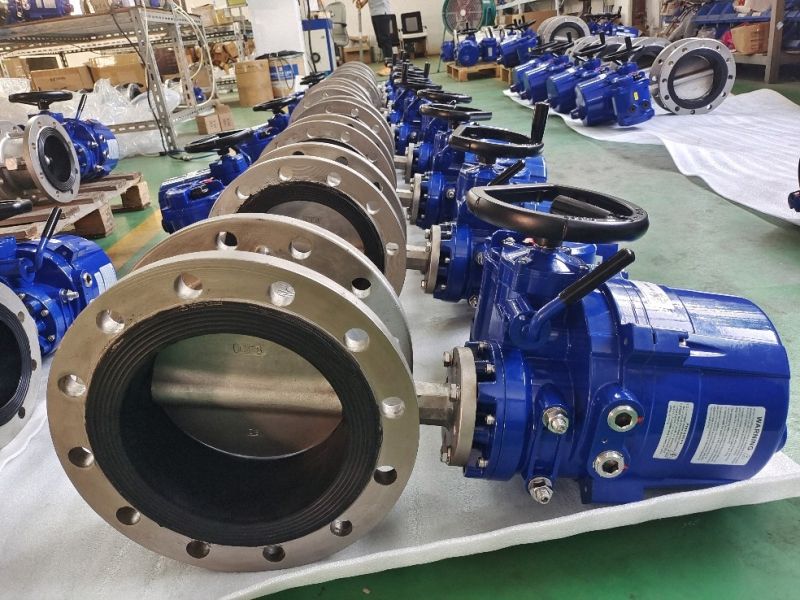
Pressure Testing and Valve Operation
Pressure testing and valve operation are critical aspects of ensuring the safety, reliability, and efficiency of various systems and equipment that involve fluid or gas transfer, such as pipelines, vessels, and process systems. Pressure testing serves as a method to verify the integrity and strength of these systems by subjecting them to controlled pressure levels higher than their normal operating conditions. This process helps identify any leaks, weak points, or defects in the system, allowing for necessary repairs or adjustments to be made before the system is put into operation.Valve operation, on the other hand, plays a crucial role in regulating and controlling the flow of fluids or gases within these systems. Proper functioning of valves is essential for maintaining desired pressure levels, preventing over-pressurization, and ensuring the overall efficiency of the system. Regular inspection and maintenance of valves, including checking for wear, corrosion, or damage, are vital to ensure their optimal performance and longevity.
To conduct effective pressure testing and valve operation, it is essential to follow established procedures and guidelines, such as those outlined by industry standards or the manufacturer’s recommendations. Pressure testing typically involves isolating the system or component, filling it with a test medium (usually a liquid or gas), and gradually increasing the pressure to the specified test value. During the test, careful monitoring and observation should be carried out to detect any signs of leaks, deformation, or other issues that may indicate potential weaknesses or faults in the system.Similarly, valve operation should be routinely checked and tested, with attention given to proper actuation, sealing, and control functions. This may involve visual inspection, functional tests, or the use of specialized equipment to assess the valve’s performance under various conditions.
Upon completion of pressure testing and valve operation assessments, any identified issues should be promptly addressed to prevent potential hazards, system failures, or inefficiencies. This may involve repairing or replacing damaged components, tightening connections, adjusting control settings, or implementing other corrective actions as needed.By prioritizing pressure testing and valve operation as integral parts of system installation, maintenance, and operation processes, organizations can ensure the safety, reliability, and efficiency of their equipment and systems, ultimately contributing to the success and sustainability of their operations.
Performing pressure testing before fully opening or closing the valve
Performing pressure testing before fully opening or closing the valve is an essential precautionary measure to ensure the safety and reliability of fluid or gas transfer systems. This step helps identify any potential issues, such as leaks, weak points, or defects in the system components, including valves, pipes, and fittings, before they are subjected to regular operating conditions. By conducting pressure testing prior to fully manipulating the valve, workers can mitigate the risk of over-pressurization, equipment damage, or hazardous incidents that may arise from undetected faults. To carry out this process effectively, it is crucial to follow established procedures and guidelines, such as those outlined by industry standards or the manufacturer’s recommendations. This may involve isolating the system or component, filling it with a test medium, and gradually increasing the pressure to the specified test value while carefully monitoring for any signs of issues. By incorporating pressure testing as part of the valve operation process, organizations can enhance the safety, reliability, and efficiency of their systems, ultimately contributing to a safer and more productive work environment.
Ensuring proper operation of the valve
Ensuring proper operation of the valve is crucial for maintaining the safety, efficiency, and reliability of fluid or gas transfer systems in various industries. Valves play a vital role in regulating and controlling the flow of fluids or gases within these systems, making their optimal performance essential for preventing over-pressurization, leaks, or other issues that could potentially lead to hazardous incidents or system failures. To guarantee the proper operation of the valve, it is important to follow established procedures and guidelines, such as those outlined by industry standards or the manufacturer’s recommendations. This may involve regular inspection and maintenance of valves, including checking for wear, corrosion, or damage, assessing actuation and sealing functions, and verifying the accuracy of control settings. Additionally, workers should be trained in the correct use and handling of valves, ensuring they are knowledgeable about the specific requirements and limitations of each type of valve they encounter. By prioritizing the proper operation of valves, organizations can enhance the safety, reliability, and efficiency of their fluid or gas transfer systems, ultimately contributing to the success and sustainability of their operations.
Monitoring for any signs of leaks or malfunctions
Monitoring for any signs of leaks or malfunctions is an essential aspect of maintaining the safety, efficiency, and reliability of various systems and equipment, particularly those involving fluid or gas transfer. Vigilant monitoring helps identify potential issues at an early stage, allowing for timely intervention and corrective action before they escalate into more severe problems or hazardous incidents. To effectively monitor for leaks or malfunctions, it is crucial to establish a comprehensive inspection and maintenance program that includes regular visual checks, functional tests, and the use of specialized tools or equipment, such as leak detectors, pressure gauges, or thermal imaging cameras. Workers should be trained to recognize common indicators of leaks or malfunctions, such as unusual noises, fluctuations in pressure or temperature, or visible signs of wear or corrosion. Additionally, implementing remote monitoring systems and advanced sensor technologies can further enhance the detection capabilities and provide real-time data for more informed decision-making. By prioritizing the monitoring of leaks or malfunctions, organizations can proactively address potential issues, ensuring the optimal performance and safety of their systems and equipment, and ultimately contributing to a more sustainable and productive work environment.
Maintenance and Inspection
Maintenance and inspection are fundamental aspects of ensuring the safety, efficiency, and reliability of various systems and equipment across a wide range of industries. These processes involve regular examination, assessment, and servicing of components to identify potential issues, such as wear, corrosion, leaks, or malfunctions, and to implement necessary corrective actions to prevent system failures or hazardous incidents. A comprehensive maintenance and inspection program typically includes a combination of preventive, predictive, and reactive strategies that are tailored to the specific requirements and operational conditions of the equipment in question.
Preventive maintenance focuses on performing scheduled tasks and checks to minimize the likelihood of unexpected breakdowns or performance degradation. This may involve cleaning, lubricating, adjusting, or replacing parts according to the manufacturer’s recommendations or industry best practices. Predictive maintenance, on the other hand, employs advanced monitoring technologies, such as sensors, data analytics, and machine learning algorithms, to assess the real-time condition of equipment and predict potential failures or issues before they occur.Reactive maintenance, also known as corrective or breakdown maintenance, involves addressing problems or failures as they arise. While this approach may be necessary in some situations, an overreliance on reactive maintenance can lead to increased downtime, higher costs, and reduced overall equipment effectiveness.
To ensure the success of a maintenance and inspection program, it is essential to establish clear procedures, guidelines, and responsibilities for all personnel involved. This may include providing adequate training, resources, and tools for workers to carry out their tasks effectively, as well as implementing robust record-keeping and documentation systems to track maintenance activities, trends, and improvements over time.Furthermore, effective communication and collaboration between maintenance teams, operators, and management are vital for fostering a proactive maintenance culture and ensuring that all stakeholders are aligned in their objectives and priorities.By prioritizing maintenance and inspection as integral components of equipment lifecycle management, organizations can optimize the performance, safety, and longevity of their assets, ultimately contributing to the success and sustainability of their operations.
Regularly inspecting and maintaining valves to ensure safe operation
Regularly inspecting and maintaining valves is a critical aspect of ensuring safe operation in various systems and equipment that involve fluid or gas transfer. Valves play a pivotal role in controlling and regulating the flow of fluids or gases within these systems, making it essential to keep them functioning optimally to prevent issues such as over-pressurization, leaks, or equipment damage. To achieve this, a comprehensive inspection and maintenance program should be implemented, which includes visual checks for wear, corrosion, or damage, functional tests to assess actuation and sealing performance, and verification of control settings accuracy. Adhering to manufacturer’s recommendations and industry best practices is also crucial for maintaining valve integrity. By regularly inspecting and maintaining valves, organizations can ensure the safety, reliability, and efficiency of their fluid or gas transfer systems, ultimately contributing to a safer and more productive work environment, and reducing the risk of costly downtime or hazardous incidents.

Scheduling routine inspections and preventative maintenance tasks
Scheduling routine inspections and preventative maintenance tasks is a vital component of maintaining the safety, efficiency, and reliability of various systems and equipment across diverse industries. By proactively addressing potential issues before they escalate into more severe problems or result in equipment failure, organizations can significantly reduce downtime, extend the lifespan of their assets, and optimize overall operational performance. To implement an effective preventative maintenance program, it is essential to establish a schedule based on the manufacturer’s recommendations, industry best practices, and specific requirements of the equipment in question. This schedule should include regular visual inspections, functional tests, cleaning, lubrication, adjustments, and replacement of worn or damaged parts as needed. In addition, it is crucial to maintain accurate records of all maintenance activities, trends, and improvements to facilitate data-driven decision-making and continuous improvement efforts. By prioritizing routine inspections and preventative maintenance tasks, organizations can proactively safeguard the integrity of their systems and equipment, ultimately contributing to the success and sustainability of their operations.
Identifying and addressing potential safety hazards
Identifying and addressing potential safety hazards is a critical aspect of maintaining a secure and productive work environment across various industries. Proactively recognizing and mitigating risks helps prevent accidents, injuries, and equipment damage, ultimately contributing to the overall success and sustainability of an organization. To effectively identify and address safety hazards, it is essential to establish a comprehensive risk assessment and management process, which includes regular inspections of facilities, equipment, and work practices to uncover potential issues. This process should involve input from employees at all levels, as well as adherence to relevant industry standards, regulations, and best practices. Once potential hazards are identified, appropriate corrective actions must be implemented, such as modifying work procedures, providing additional training, installing safety equipment, or upgrading machinery and infrastructure. Additionally, fostering a strong safety culture within the organization, where all employees feel empowered to report hazards and participate in safety initiatives, is crucial for sustaining long-term improvements. By prioritizing the identification and mitigation of safety hazards, organizations can create a safer and more efficient work environment, ultimately enhancing employee well-being and operational performance.
Conclusion
In conclusion, ensuring the safety of personnel and equipment during the installation of gate and butterfly valves is of paramount importance. By adhering to proper safety measures and guidelines, organizations can mitigate risks associated with valve installation, optimize operational efficiency, and maintain a secure work environment. The following are key safety measures that should be taken into consideration when installing gate or butterfly valves:
- Thoroughly Review Manufacturer’s Instructions: Before commencing any installation work, it is crucial to carefully review the manufacturer’s guidelines and recommendations. These instructions typically provide detailed information on the correct handling, positioning, and installation procedures specific to the valve type and model in question.
- Ensure Proper Training and Qualifications: Personnel involved in the installation process should be adequately trained and qualified to handle the task at hand. This may include specialized training on valve installation, as well as general safety training relevant to the work environment.
- Verify System Compatibility: Prior to installation, ensure that the selected valve is compatible with the system’s specifications, including pressure, temperature, flow rate, and fluid or gas type. Incompatible components can lead to malfunctions, leaks, or even catastrophic failures.
- Inspect the Valve and Components: Before installing the valve, conduct a thorough inspection to check for any signs of damage, wear, or defects. Additionally, verify that all necessary components, such as gaskets or fasteners, are in good condition and suitable for use.
- Implement Lockout/Tagout Procedures: To prevent accidental activation of the system during installation, implement appropriate lockout/tagout procedures to isolate and secure energy sources, such as electrical, hydraulic, or pneumatic power.
- Utilize Personal Protective Equipment (PPE): Ensure that all personnel involved in the installation process are equipped with appropriate PPE, such as safety glasses, gloves, hard hats, and protective footwear. This helps minimize the risk of injury from potential hazards, such as falling objects, sharp edges, or contact with hazardous substances.
- Follow Proper Lifting and Handling Techniques: When handling and installing heavy or large valves, use appropriate lifting equipment, such as hoists or cranes, and follow proper lifting and handling techniques to prevent injuries or damage to the valve and surrounding components.
- Test and Inspect After Installation: Once the valve has been installed, conduct a thorough inspection and testing procedure to verify proper operation and sealing performance. This may include pressure tests, leak detection, and functional checks to ensure that the valve is functioning correctly and safely within the system.
- Maintain Accurate Documentation: Keep detailed records of all installation activities, including valve specifications, installation procedures, test results, and maintenance schedules. This information can be invaluable for future reference, troubleshooting, and continuous improvement efforts.
- Foster a Safety Culture: Encourage a strong safety culture within the organization by emphasizing the importance of safety during valve installation and promoting open communication and collaboration among personnel.
By prioritizing these safety measures when installing gate valve, organizations can mitigate potential risks, enhance operational efficiency, and maintain a safe and productive work environment. Implementing a proactive approach to safety not only protects employees and equipment but also contributes to the overall success and sustainability of an organization’s operations.

Recap of the importance of safety measures when installing gate and butterfly valves
In summary, the importance of safety measures when installing gate valve and butterfly valve cannot be overstated. Adhering to proper guidelines and precautions ensures the protection of both personnel and equipment, while also optimizing operational efficiency and system performance. By thoroughly reviewing manufacturer’s instructions, providing appropriate training, verifying system compatibility, and implementing necessary safety procedures, organizations can effectively mitigate risks associated with valve installation. Furthermore, fostering a strong safety culture within the organization encourages proactive identification and mitigation of potential hazards, ultimately contributing to a safe and productive work environment. It is essential to prioritize safety measures during gate and butterfly valve installation to maintain long-term reliability, efficiency, and the overall success of an organization’s operations.
Encouragement to follow the outlined safety measures to ensure a successful and safe installation
It is crucial for organizations and personnel involved in the installation of gate valve and butterfly valve to diligently follow the outlined safety measures to ensure a successful and safe installation process. By prioritizing safety and adhering to best practices, you not only safeguard the well-being of your team members but also protect valuable equipment and maintain the integrity of your systems. A proactive approach to safety demonstrates a commitment to excellence and fosters a culture of responsibility within the organization. Embrace the outlined safety measures and encourage your team to do the same, as this will contribute to the overall success, sustainability, and reputation of your organization. Remember, a safe and efficient work environment is the foundation for long-term growth and prosperity.
Invitation for readers to share their experiences or ask questions in the comments section
We invite our readers to actively participate in the discussion by sharing their experiences, insights, and best practices related to gate valve and butterfly valve installation safety in the comments section below. Your input is invaluable, as it helps foster a collaborative learning environment and enables all of us to benefit from each other’s knowledge and expertise. Additionally, if you have any questions or concerns about the safety measures outlined in this article, please feel free to ask in the comments section. Our community is here to support and engage with one another, and we look forward to hearing your thoughts and perspectives on this critical aspect of valve installation safety.


